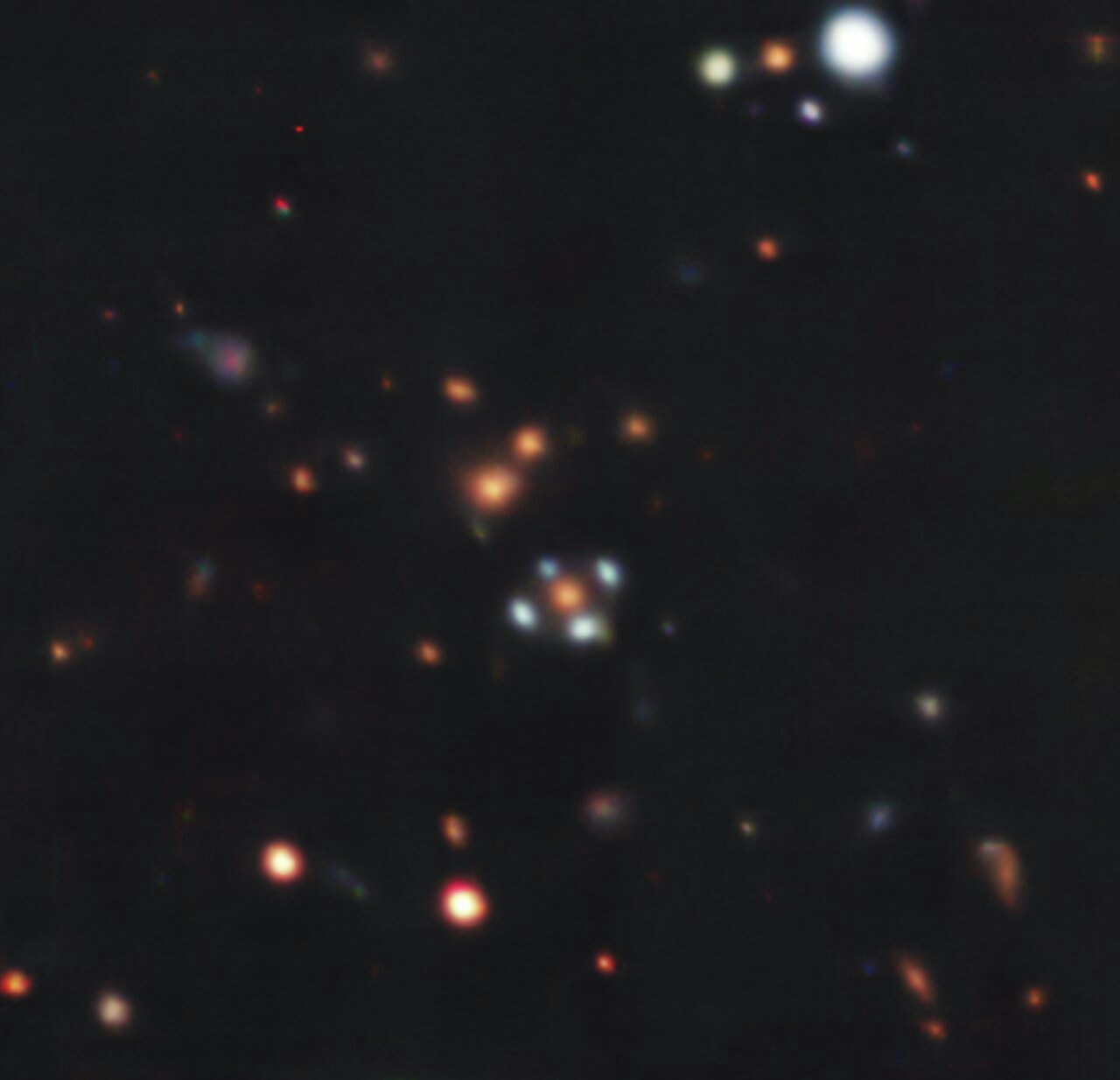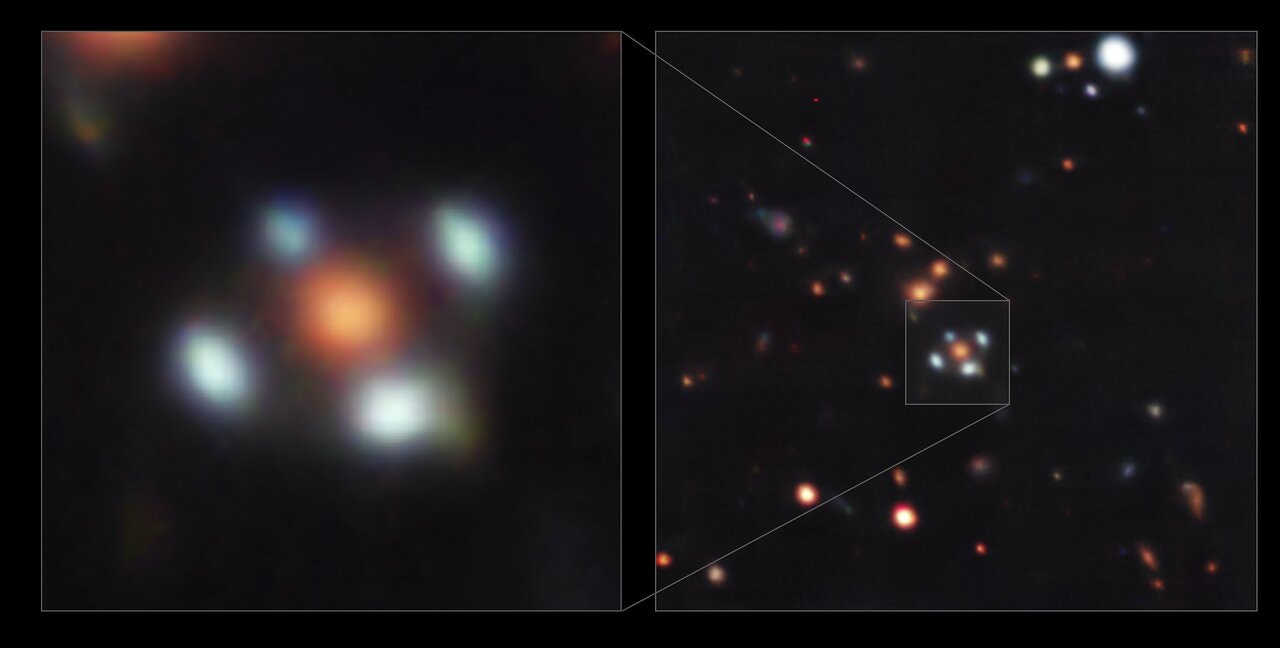
Astronomers have just spotted a phenomenon in the sky that Albert Einstein predicted we’d never see — and it’s one of dozens observed so far.
The four light blue spots surrounding the little orange blob in this image from the Very Large Telescope (yes, that is its official name, VLT for short) are actually four images of the same galaxy, projected by a gravitational lens in a rare formation called an Einstein cross.
Astronomers use gravitationally lensed images like these to study galaxies that would normally be too faint and too far away to see. In this case, the light from the little blue galaxy dates back to 11 billion years ago.
This perfectly aligned pair of galaxies are the stars of a recent paper in The Astrophysical Journal Letters.

Weird Physics Trick
From our point of view here on Earth, that little blue galaxy lies directly behind the orange one. Because the orange galaxy is so massive, it actually bends the fabric of spacetime, so light has to follow curved paths around the galaxy instead of shining straight through it. Physicists call this a gravitational lens. The little blue galaxy’s light emerges from this gravitational lens four times, creating what’s called an Einstein cross.
Einstein crosses, or Einstein rings, happen when a gravitational lens, a very distant object, and a telescope line up perfectly across billions of light-years of space. When a gravitational lens is something big and messy, like a whole galaxy cluster, distant objects’ light gets stretched and distorted into arcs or just slightly bent. If the mass that forms the gravitational lens is a sphere, you get an Einstein ring. But if the mass that forms the lens is elliptical, you get four images of the distant object projected around the lens: an Einstein cross.
Astronomer Aleksandar Cikota and his colleagues used an instrument on the VLT to split the light from each pixel of this image into a spectrum, or all the individual wavelengths of light that add up to the color we see. Those spectra of light revealed information about the two galaxies’ ages and chemical makeup.
The distant blue galaxy turns out to be 11 billion light years away and bursting with star formation; that’s why it looks so blue, despite being so far away. Such a distant galaxy would normally be red because as the universe expands, the light waves shining from the galaxy get stretched out, becoming longer and, therefore, redder. On the other hand, the orange galaxy is only about 5 billion light years away, but it looks redder because it’s full of dust and aging stars.

Nobody is Always Right
Physicist and hairstyle icon Albert Einstein predicted gravitational lenses as part of his theory of general relativity. Another physicist predicted that if Earth, the gravitational lens, and a distant object were lined up exactly right, the lens would turn the distant object’s image into a halo or ring of light around the lens.
Einstein agreed with the prediction but wrote back, “There is no hope of observing this phenomenon directly.” He thought we’d never find distant galaxies in such perfect alignment and that we’d never have telescopes capable of seeing the cosmos in enough detail.
But astronomers discovered the first so-called “Einstein ring” in 1998. Years earlier, in 1985, a different team of astronomers spotted the first known “Einstein cross.” Today, astronomers have documented dozens of these formations, and Cikota and his colleagues say it’s likely more will turn up over the next decade thanks to upcoming telescopes like Euclid and Nancy Grace Roman.







